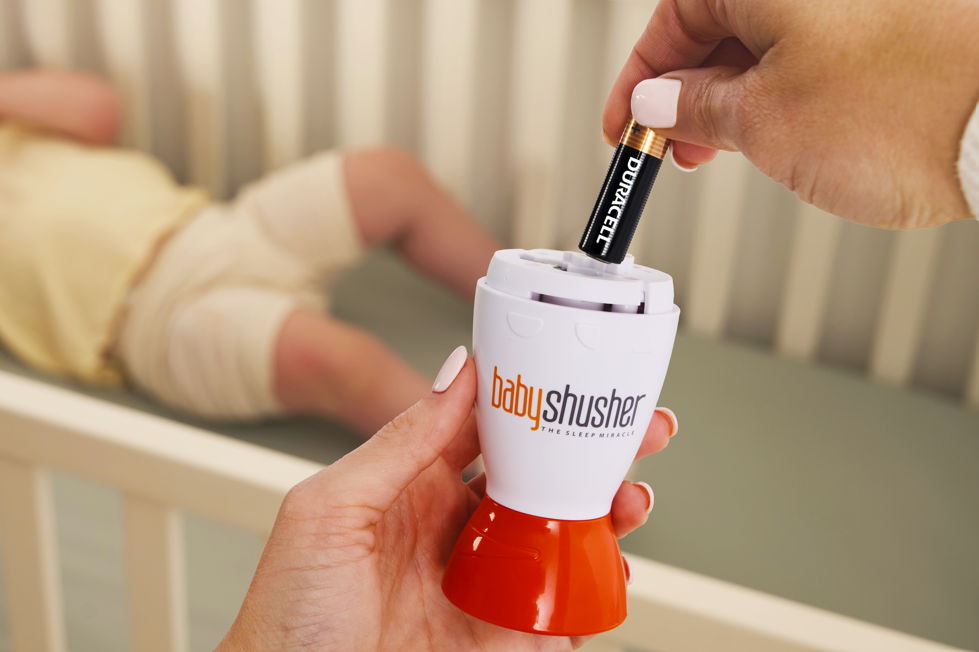Anyone with a new baby knows the struggle of getting them to sleep through the night.
It can be a guessing game that leaves you frustrated, overwhelmed and severely sleep-deprived. However, if you’re past the newborn stage, a technique called “dream feeding” may help you and your baby catch some much needed “zzzs.”
With that in mind, it makes sense that increasing your baby’s evening calories can help them sleep for longer periods.
Think of it like topping off a half-full gas tank so you won’t have to stop on a long drive. Dream feeding can minimize or postpone one of the most common reasons infants wake up during the night: rumbling in the belly.
What Is Dream Feeding?
The name says it all. Dream feeding involves feeding your baby once they’re asleep. This can extend the amount of time your baby sleeps by removing hunger from the equation.
As a result, dream feeding can be extremely helpful with babies who don’t sleep through the night. The trick is in learning how to do it without waking your baby up completely.
Your baby may be too drowsy for a full meal but getting that late-night feed can extend baby’s sleep time by a couple of hours. To new parents, those extra moments are like precious gold!
What is the best time to dream feed my baby?

Now that you understand how a dream feed works, it’s time to pin down the timing.
Timing your dream feed depends entirely on your schedule, however, it’s typically best to do so between 10 pm and midnight. Consider what time you go to bed and what’s best for your baby’s age group and daily schedule.
In theory, if you feed your baby (without fully waking them) before going to bed, they’ll be full enough to sleep for longer periods at night, thereby avoiding those 2:00am wake ups!
When can I start dream feeding my baby?
A great thing about knowing when to start dream feeding is that there are no hard and fast rules. Every baby is different, and in the early weeks, they probably won’t have a sleep schedule at all. Newborns usually sleep in sporadic spurts, ranging from 1-4 hours.
Around 1-4 months old, baby sleep schedules become more predictable as they can sleep for 3-4 hour periods more regularly. This is commonly when most parents decide to introduce a dream feed.
Pro Tip: To start, have an idea of how long your baby normally sleeps before getting hungry. For instance, if your baby typically sleeps for 5 hours uninterrupted, you may try dream feeding about two hours in. Ideally, this will help increase their sleep time to 6 or 7 hours.
How to Prepare Baby For Dream Feeding
An important aspect of knowing how to dream feed is the preparation process that includes careful steps:
Choose The Right Time
The ideal dream feeding time should be late enough to stretch your baby’s sleep, but not too late that it interferes with their naps and nighttime routine. If you know your baby wakes up around 2 or 3 in the morning, it’s best to start dream feeding earlier in the night.
Set Up a Quiet Feeding Environment
When attempting dream feeding, it’s important to keep the lights low and noise levels at a minimum. Doing so will ensure your baby doesn’t wake up completely.
Select the Right Feeding Position
To keep your baby in a state of semi-sleep, choose the feeding position that requires less effort from them. Side-lying or feeding while sitting upright are both great options; the key is to keep your baby’s position natural and relaxed.
How can I implement dream feeding?
Step 1: Put baby to bed at their normal bedtime.
Step 2: Observe your baby over the next couple hours before starting to dream feed. Once he enters a semi-awake, dreamy state is the ideal time to start. Here's how you can tell when it's time for your baby's dream feed:
- Baby is stirring but not quite waking up.
- Baby’s eyes are moving around beneath their lids, suggesting REM sleep.
Step 3: Once you’ve identified these signs, gently remove your baby from the crib and start feeding as quietly and gently as you can.
Step 4: Feed the baby until she’s satisfied and burp them with a soft pat on the back.
After your little one is back in bed, you should do the same. Ideally, the baby will stay down for an extra 2-3 hours.
Many babies will still feed even if they aren’t in this half-awake condition, so don't worry if your baby appears to be asleep when you go to feed them.
When you pick up your sleeping baby for a feeding, the goal is to minimize stimulation—so don't turn on the lights, sing to them, or change their diaper unless necessary.

Pro Tip: Keep your Baby Shusher close in case your baby wakes up during a dream feeding session. That way, you can quickly twist it on to soothe baby back to sleep.
Sample Schedule for Dream Feeding Baby
6:30 pm: Feed baby to put them down to sleep.
7:00 pm: Baby falls asleep.
10 pm: DREAM FEED
10:30 pm: You head to bed.
4:00 am: Baby wakes for a feeding
4:30 am: Baby returns to sleep, and you return to sleep.
7:00 am: The baby awakens to eat and begin the day.
Techniques for Dream Feeding
There are several methods for dream feeding, each with its own pros and cons.
The Quiet Approach
The quiet approach involves entering the baby’s room in total darkness and silence, gently picking them up, and placing them in their crib after a few minutes of calm cuddles. This method helps create a sense of security for the baby but can be difficult for new parents who are used to more active forms of settling.
The Cue-based Approach
The cue-based approach uses calming music, white noise, or other sounds to signal to the baby that it’s time to relax and go back to sleep. While this technique is much easier for parents who are unfamiliar with dream feeding, it may cause confusion or anxiety in some babies if they sense something different in their normally quiet environment.
The Wake-and-Feed Approach
The wake-and-feed approach requires waking your baby just enough so that he or she knows what’s happening and then providing nourishment with a bottle or breastfeeding session before going back to sleep. While this technique is very effective in getting your little one fed and settled quickly, it increases the risk of creating an unhealthy association between waking up at night and eating food.
Regardless of how you dream feed your baby, consistency is key when trying to establish healthy sleep patterns for your infant. It’s important that the same cues are used each time to ensure success with any dream feeding technique.
Why should I dream feed?
Dream feeding helps both parents and babies get more sleep.
Many baby books, including those by Baby Whisperer author Tracy Hogg, who originated the term "dream feed," and Save Our Sleep author Tizzie Hall, support the idea that dream feeding helps babies sleep for longer periods.
In other words, you’re training them to sleep through the night, though this will not happen immediately.
Depending on their age and weight, young babies may still wake up for a few nights, but the aim is to push those wakings later and later. The goal is to get baby sleeping from the dream feed all the way through to the morning.
Benefits of Dream Feeding
Besides both parents and babies getting a night of more restful sleep, there are many benefits of dream feeding for both. These include:
Parental Benefits
Dream feeding means that there is less need for rocking or other types of physical soothing in order for the baby to fall asleep. This can save parents time and energy, leaving them with more time for themselves during the evening.
Baby Benefits
Dream feeding helps them stay asleep longer because they don’t need to completely wake up in order to get nourishment, which can be disruptive and make it harder for them to form healthy sleeping patterns.
Common Challenges and Solutions
While parents and babies can take advantage of the benefits of dream feeding, it does come with its fair share of challenges.
Many parents report difficulty in waking the baby just enough so that he or she knows what’s happening, as well as trouble getting the baby back to sleep after providing nourishment. Other parents struggle with feeding for too long or waking the baby up entirely during dream feeds.
To help overcome these issues, it’s important to:
- Make sure you are using the same cues each time so that your baby knows what to expect.
- When picking them up from their crib, try minimizing movement and speaking in a calming voice so you don’t overstimulate them.
- As soon as they start drinking from a bottle or breastfeeding, make sure you take them right back to their crib once they are finished.
- If you have trouble getting them back to sleep afterward, try swaddling or using gentle rocking motions until they drift off again – this can be especially helpful if your little one likes physical contact during times of stress.
- Always remember when to stop dream feed! Do not feed for too long – usually, 5-10 minutes is enough for most babies!
By following these simple tips, many parents find dream feeding to be an effective tool for improving their little one’s sleep routine while also allowing them some much-needed rest themselves!
Dream feeding isn’t for everyone.
Keep in mind that dream feeding may not work for every baby. Because each baby is unique, you should experiment and adjust their sleep schedule until you find a groove.
"It can work beautifully for some kids," says sleep consultant Alanna McGinn, "but for some babies, it won't work."
Similarly, dream feeding may not be suitable for all parents; you may want to go to bed at 8 or 9 pm and sleep until your baby's first natural wake-up. That's fine, too!
Alternatives to Dream Feeding
Struggling with dream feeding or just not feeling it? There are plenty of alternatives that you can use to help your baby sleep through the night.
Sleep Training
Sleep training involves teaching your baby healthy sleeping habits by setting specific bedtimes and wake times, as well as taking measures to reduce disturbances that could interfere with their sleep patterns.
This can include everything from eliminating screen time before bedtime to using blackout curtains or dimmers in the nursery. If your baby is having difficulty falling asleep at night or waking up too often during the night, this technique may be useful.
Swaddling
Swaddling is another popular technique for helping babies get more restful sleep. It involves wrapping your little one snugly in a blanket so they feel secure and safe during bedtime – this can be especially beneficial if your baby loves being held and cuddled!
Sleep Sound Machines for Babies
From low-level background noises to fans and sound machines, white noise machines help your baby sleep by masking extra noises that could potentially wake them up. These machines can be especially helpful if your baby wakes easily due to external stimuli such as car horns, dogs barking, or other loud sounds.
However, parents should not get just any white noise machine. Be sure to get one that is specifically designed to help babies fall asleep quicker and stay asleep longer.
The Baby Shusher takes white noise to another level by producing white noise that mimics the sounds babies hear in the womb at a safe volume.
The Baby Shusher is trusted by thousands of parents worldwide and can help babies fall asleep faster, stay asleep longer, and transition through sleep cycles easier.
Learn More About The Baby Shusher Today!

